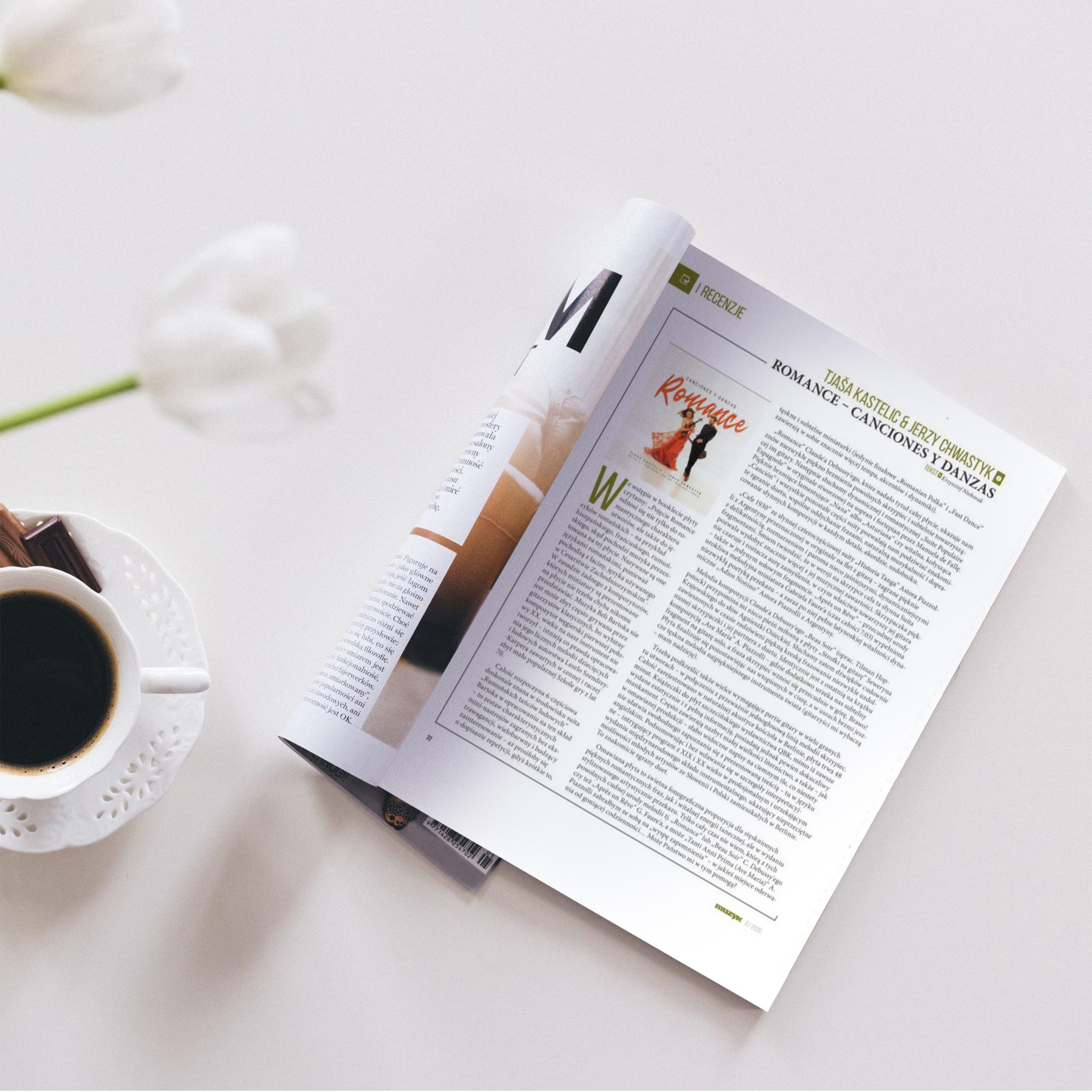
“BRAVO!”
Krzysztof Nieborak for polish magazine „Muzyk“
The album finalizes, leaving us blown into silence, and there is a longing melody in the ears of the most beautiful instrument in the world. (guitarists will forgive me – I hope:)
Krzysztof Nieborak for polish magazine „Muzyk“ wrote this touching review of the Debut Album “Romance – Canciones y Danzas” by Tjaša Kastelic and Jerzy Chwastyk.
From the introduction in the album booklet we read: “The concept of Romance – refers not only to the romantic nature of the works, but also to the Romance languages – for example, Spanish, French, Romanian, where the music presented on this album comes from. They are so called Romance languages because they come from Latin, the language used in the Western Roman Empire. ”
In fact, none of the composers whose miniatures are presented on the album probably need no introduction. The music of Bela Bartok may not be played too often by classical guitarists, because the outstanding Hungarian composer of the first half of the 20th century. he didn´t write nothing for our instrument – there are indeed works of his numerous children’s and folk melodies by Laszlo Szendrey-Karper contained in the valuable and rather not very popular School of the 70s.
The whole begins with a six-part Bartok’s well-known Romanian folk melodies in the arrangement for this combination – it is a set of characteristic mini-moods played without extravagance, multicolored and arousing interest – until you would like to add some repetition, because these are short, longing and subtle miniatures (only the final Romanian Polka and Fast Dance contain much more tempo, accents and dynamics).
Claude Debussy – Romance, which gave the title to the whole album, shows us again the extraordinary beauty of the sound of slow violin and the subtly accompanying guitar.
Then we listen to the dynamic and romantic Spanish folk Suite in the original created for soprano and piano by Manuel de Falla. Beautifully sounding lamenting Nana or Asturiana or vital Canción and all the other parts of the suite allow us to admire the great teamwork of the duo, joint breathing of phrases, natural musicality and refining the famous compositions in every detail, chord, ornament.
Cafe 1930 from the famous four-part Suite History of Tango Astor Piazzolla from Argentina intended original for flute with a guitar – played beautifully with delicacy, dreamy and a few slightly brighter, more dynamic fragments. I dare say that in the version for violin of this famous Suite allows to bring out much more from its musical content. The violinist beautifully enchants and spreads an aura of thought, in which is actually accompanied by her guitar – also in the only solo fragment.
Gabriel Faure – wonderful beauty, charming melodic miniature filled with extraordinary poetics of transmission – followed by dynamic Adios Nonino Astora Piazzolla from Argentina, full of Latin vitality.
The melody of Claude Debussy’s composition Beau Soir (arranged by Tilman Hoppstock) reminds me a bit of a love song from the album Strofki for guitar by Seweryn Krajewski to the words of Agnieszka Osiecka. We listen to the sounds wonderfully suspended during the astonishment at the beautiful line of phrasing an extremely talented violinist and her partner from the duo.
It is identical to the last composition Ave Maria by A. Piazzolla – where we are also captivated by a subtle fragment for a solo guitar and the phrase of the violin rises upwards. Bravo!
The album finalizes, leaving us blown into silence, and there is a longing melody in the ears of the most beautiful instrument in the world (guitarists will forgive me – I hope:)
It is also important to emphasize the very demanding guitar parts in many of the songs played here – combined with the mostly single-voice violin melody line.
The whole was recorded in the natural acoustics of the church in Berlin, the record lasts 48 minutes.
To sum up and without going into interpretative details – an intriguing program from the 19th and 20th centuries in a professional and captivating edition of an international instrumental combination, showing the extraordinary possibilities of young artists from Slovenia and Poland residing in Berlin. This is a great harmonious duo.
This album is a great phonographic proposition for longing beautiful romantic phrases, as well as vital dance energy, but in the release of an artistically stylized message.
I still don’t know which of these slow, wonderful melodies, i.e. Romance or Beau Soir by C. Debussy or Apres un reve by G. Faure, or maybe Tanti Anni Prima (Ave Maria) by A. Piazzolla I would take with me for ” the island of oblivion “- to some place detached from everyday life …
Can you help me with this?
